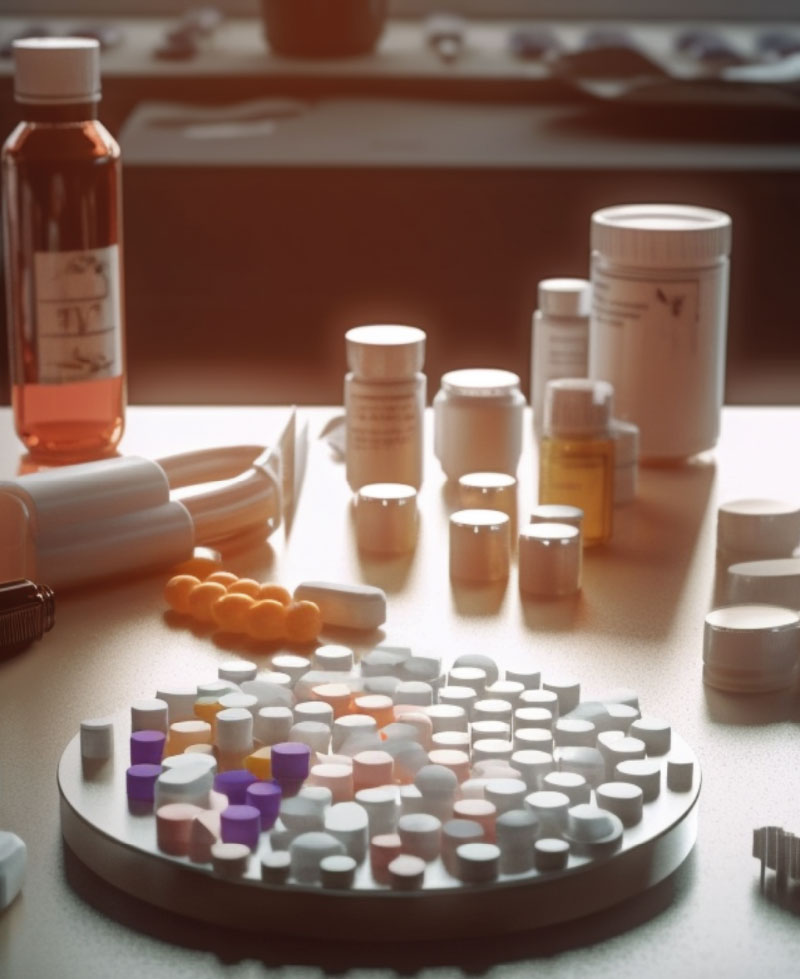Selected licit and illicit drugs in surface water in sampling profiles near wastewater treatment plant outlets
The majority of the population (85 %) in the Czech Republic is connected to the public sewerage network of almost 3,000 wastewater treatment plants (WWTPs). Municipal wastewater contains a number of substances providing information on the state of the population. This information is evaluated by Wastewater-Based Epidemiology (WBE). A WWTP does not remove all contaminants that are discharged into the recipient. In this study, the loading of a recipient with selected licit and illicit drugs was monitored.
Wastewater analysis as a tool for investigating drug abuse in education institutes
The wastewater based epidemiology (WBE) approach to wastewater has long been used for monitoring drug consumption, especially in urban agglomerations. In this pilot project, it was applied to detect drug use in selected educational establishments. The tests took place in both primary (age 6–15) and secondary schools (age 12–19). The focus was on illicit drugs (marijuana, methamphetamine, amphetamine, cocaine, and ecstasy), as well as the licit drug nicotine and its metabolites. Ephedrine was also monitored. Grab samples were taken before the start of classes between 7:30 and 8:05 a.m., and during the so-called big break, i.e., between 9:30 and 10:00 a.m., or 10:30–11:00 a.m.
Sampling was carried out on two dates, at the beginning of June and at the end of September/beginning of October 2022. There were positive find-ings for THC, ephedrine, methamphetamine and nicotine metabolites, primarily trans-3-hydroxy-cotinine. In accordance with the possibilities of the pilot project, the number of monitored schools was very small. In order to objectively determine the situation in educational facilities, it would be appropriate to monitor a more representative group, which would include, for example, vocational schools. It is also worth considering another method of sampling wastewater, e.g., several hours’ composite samples. However, in many educational institutions, this method may not be feasi-ble.
Wastewater based epidemiology, determination of selected illicit drugs and Covid-19 pandemic
The World Health Organization (WHO) declared an outbreak of a global health emergency on 30th January 2020 and a pandemic caused by Covid-19 in March of the same year. In our paper, we tried to find out if and how this situation affected drug consumption from the perspective of wastewater analysis. We compared the results of weekly sampling events from 2019, 2020, 2021 and 2022, which took place at approximately the same period of the year, but in 2020, 2021, and 2022 were affected by the state of emergency and other pandemic-related measures. We monitored the concentration of selected drugs – THC, methamphetamine, MDMA, cocaine, and some of their metabolites (amphetamine and benzoylecgonine) in wastewater samples taken at the inflow to wastewater treatment plants. According to our measurements, virtually all monitored drugs experienced changes in their consumption.
Dynamics of micropollutant loads into water supply reservoirs Vír I, Opatovice and Ludkovice
Pesticides are still an important group of substances involved in surface water pollution. Their increased occurrence in watercourses in the agricultural landscape is mainly linked to rainfall-runoff conditions, types of cultivated crops, and methods of agricultural management. In order to capture these factors, passive sampling techniques were chosen for the assessment of the load of these substances in selected catchments of water supply reservoirs in the administration of Povodí Moravy State Enterprise. These techniques consist of continuous exposure for several weeks with gradual (integrative) capture of pollution on suitable sorbents. The POCIS (polar organic chemical integrative samplers) were chosen in this work – widely used samplers suitable for capturing polar organic substances. They were applied in eight consecutive sampling campaigns to cover the entire growing season. The aim was to assess the spatio-temporal dynamics (in monthly steps) of selected pesticides and their metabolites into five water supply reservoirs. Due to the scope of the obtained data, this article is focused on the presentation of the results of tributaries into water supply reservoirs Vír I, Opatovice, and Ludkovice, which were monitored in 2021. When the sampling rate Rs was published, it was possible to recalculate the pollution captured by the passive sampler to average concentration during exposure. The results showed which tributaries into the reservoirs were loaded by these hazardous substances in the individual periods of the growing season. The results can be compared with the type of crops grown in a given year.
Determination of selected illicit drugs in wastewater using liquid chromatography tandem mass spectrometry
The wastewater-based epidemiology approach to the analysis of illicit drugs was conceptualized in 2001 and for the first time was applied in 2005 for cocaine estimation in Italy. Further, other illicit drugs as heroine, cannabis and amphetamine have been estimated.
Municipal wastewater as a diagnostic medium of the City of Prague
The article informs about regular, almost two-year long monitoring of municipal wastewater at selected sampling points of the Prague sewerage network. Selected illicit drugs (e.g. methamphetamine, MDMA, THC, cocaine), nicotine and its metabolites and the ethanol metabolite ethyl sulphate are monitored in municipal wastewater.





